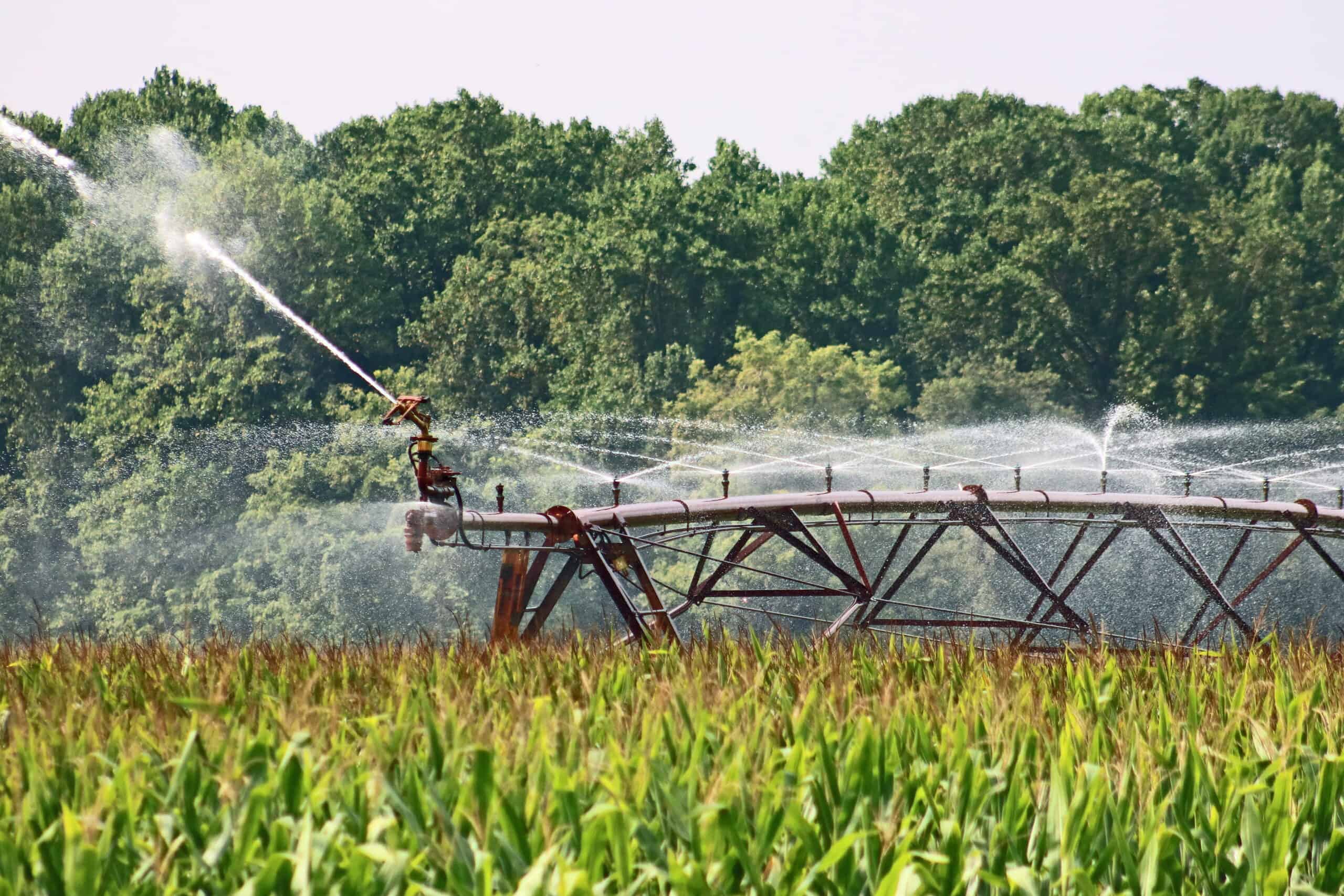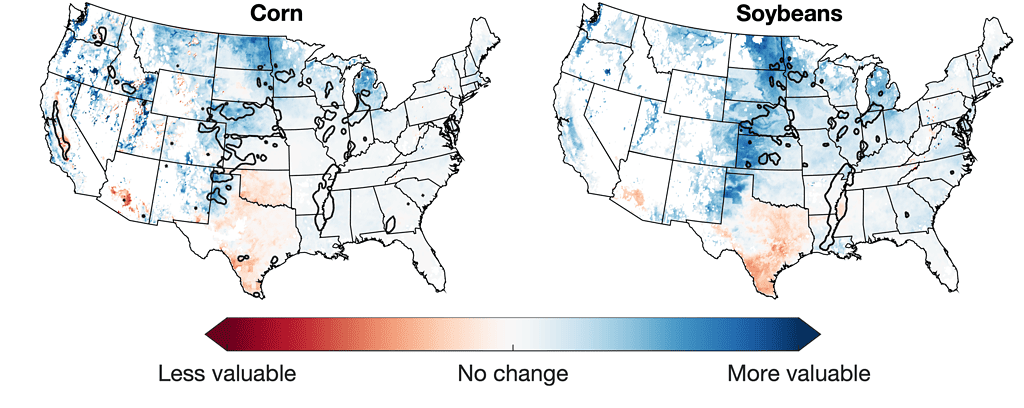By 2050, the benefits of expanding irrigation systems will outweigh the costs of installation and operation over a big part of the croplands in the United States, according to a new study. The researchers did a cost-benefit analysis under a moderate greenhouse gas emissions scenario and found it’s much more convenient to spend on irrigation.

Irrigated land accounts for 20% of the harvested cropland in the US, according to the latest agricultural census. With climate change, irrigating more crops will be critical, as drought conditions are likely to increase due to warmer weather and shifting rainfall patterns. However, installing an irrigation system can often be very expensive for farmers.
In a new study, researchers from Dartmouth University found corn and soybeans that are currently rainfed would benefit from irrigation in most of Wisconsin, Michigan, western Minnesota, North Dakota and eastern South Dakota. Soybean crops that now rely on rain could also benefit from irrigation in Ohio, Kentucky, Kansas, Illinois and Indiana.
Installing, maintaining, and running an irrigation system can cost as much as $160 per acre per year, the researchers said. While this is a lot, for some regions it’s better than paying the climate cost. “Our work creates a map of where it will make the most sense to install and use irrigation equipment for corn and soybean crops,” Trevor Partdrige, study author, said in a news release.
Irrigation and climate change
The High Plains area (Nebraska, Kansas, and northern Texas) has had a significant history of intensive irrigation in the US, with the highest economic return for irrigation, compared to the rest of the country. However, the growing expenses with drought are now pushing farmers to consider irrigation across the Corn Belt and southeastern US, where the economic return is difficult to predict.
In their study, the researchers performed a series of crop model simulations. They used several climate projections that span the range of potential future climates (hot and dry, hot and wet, cool and dry, cool and wet) to simulate future crop growth under rainfed or irrigated conditions. The model was run both for corn and soybeans across all areas in the US.

Simulations looked at three periods: historical (1981-2010), mid-century (2036-2065), and end-of-century (2071-2100) under moderate and high greenhouse gas emissions scenarios. They factored in growth data for the crops from the US Agricultural Statistic Service, including maturity, harvest dates and planting, as well as county-level crop management data.
Then, to determine the economic benefits of irrigating, the researchers calculated the additional simulated crop yield from irrigating and the increased market value that could be expected. They considered the electricity needed to pump groundwater and distribute it over the field and the expenses per acre to own and operate the irrigation system.
The results showed that by mid-century there will be enough water to irrigate soybeans in Iowa, Wisconsin, Ohio and northern Illinois and Indiana but not corn. Iowa is the largest producer of corn in the US. Groundwater resources for irrigation were found to be very abundant in the southeast US, but in this region the benefits for irrigation are minimal.
“Our results suggest that there is relatively little overlap between where there is enough water to fully irrigate crops without placing additional stress on water resources and where farmers can expect the investment in irrigation to pay for itself over the long term,” Partridge said in a news release.
The researchers also warned that the benefits of irrigation could lead to farmers using more water, which could put pressure on critical aquifers, such as the Ogallala Aquifer in the Great Plains – the largest one in the US that supports irrigated areas for corn and soybeans. Previous studies have shown more water is being extracted than what it’s being replenished.
Overall, when it comes to irrigation, farmers must consider many complex and competing factors, such as crop market values, energy costs, economic incentives and seasonal weather forecasts. The researchers hope that their study can be used to help agricultural and water resource management policies in adapting to the effects of climate change.
The study was published in the journal Communications Earth & Environment.





